Do you want to get “hot” customers but are not ready to spend months on search engine optimisation? If the answer is yes, you should definitely read this article. We’ll explain what Google AdWords is, how contextual advertising works, and why your business needs it.
This is a type of advertising that:
a) is shown to users based on their interests and requests;
b) gives you the feeling that you are being watched. After all, as soon as you think about a conditional product, it is already being offered to you on all the websites you visit;
c) is the main source of Google’s revenue.
Let’s use examples. When you enter your query, say, “robot vacuum cleaner” in the search bar, Google will first of all show you an ad unit. This can also be called product search advertising (because product cards are displayed directly).
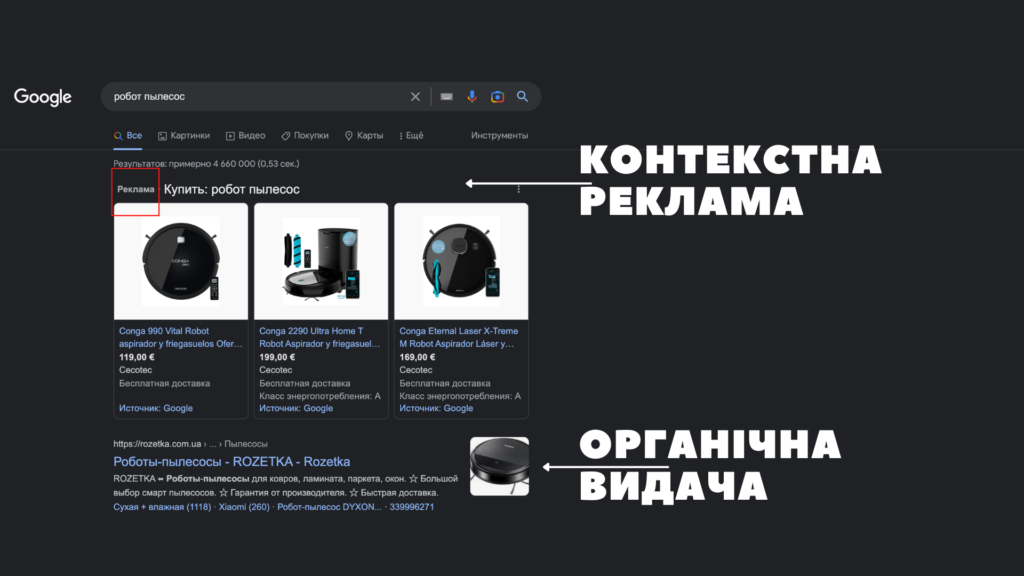
The same thing will happen if you search for English language courses, for example. But in this case, you will see text blocks instead of graphic blocks (pictures). Only the “advertising” label will remain unchanged.
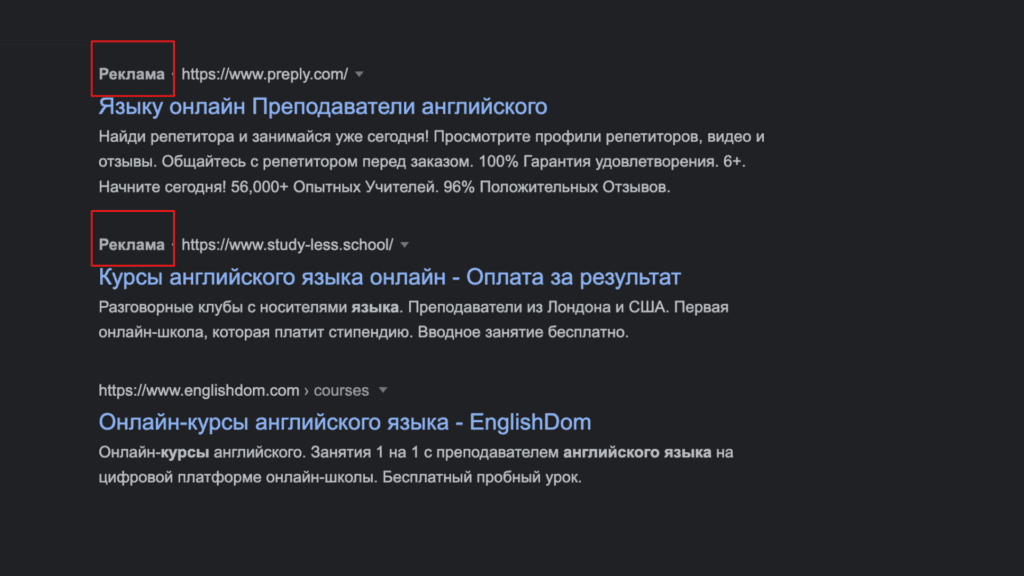
Some websites and mobile apps also have dedicated contextual advertising blocks. Here’s what happens if you Google “best hair shampoo” and then visit any website (news, information portal, movie resource) that has these ad spaces. You will be shown the products and services you have recently been interested in. That’s why this type of advertising is called CONTEXT – you are offered something that is interesting, necessary and/or you might like.
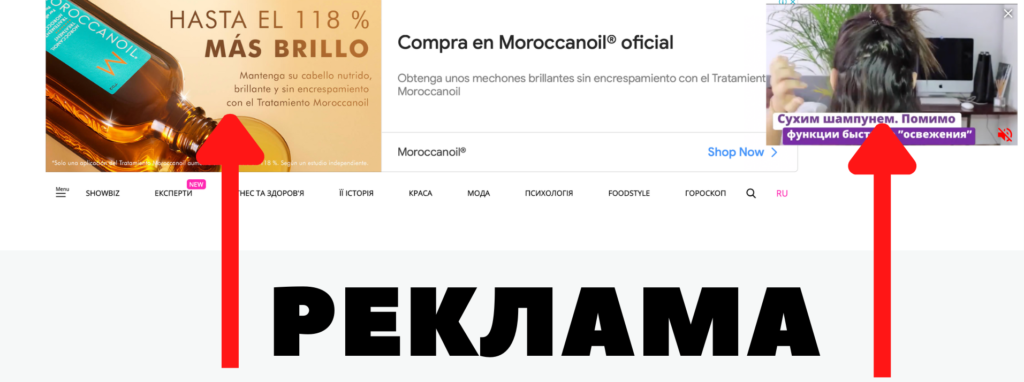
There is also targeted advertising on the Internet, which attracts people based on certain socio-demographic criteria. It is mostly used on social media, not Google. For example: a new cafe opens on your street, so its owners set up a “target” for everyone who lives nearby.
There is also banner and display advertising, which is a common way to make yourself known. When the information is not tailored to anything, it is simply shown to the maximum number of people in the hope that a certain % will still be interested and click on the link.

Native integrations (when your favourite blogger starts recommending something by clicking on a link in the description), push notifications, email newsletters, etc. can be separately mentioned. But most often, the rationality and pros and cons of using contextual advertising are compared to either targeting or SEO (organic promotion).
SEO, or search engine optimisation, does not allow you to get quick results. Usually, such a set of actions “yields results” in 3-6 months. But the context works immediately after setting it up, and you can see the first visitors in a few hours. Other advantages include:
1. High CTR (click-through rate). The sign that it is a paid ad is so organic and invisible that it does not cause disgust. And the first place in the search results is a very strong argument for the user to go to your website.
2. Relevance. People see what they are looking for, products that are within their sphere of needs and interests. So, you have already “hit the mark”. This is the main difference from targeting – the latter involves an in-depth analysis of the target audience to understand what the customer wants.
Let’s say you are a home decor manufacturer. And you have a choice to show your ad to those who have recently searched for “how to update the interior” (this will be the context) or offer your products to all women in your city (this will be the target).
3. Huge reach and guaranteed results. The audience is not limited to users of a particular platform or social network. With certain settings, ads can be seen by people from all over the world.
4. A relatively low start-up budget compared to native integrations with bloggers and opinion leaders or TV/radio advertising. Also, setting up contextual advertising is a very subtle tool, you will not “drain” money on an audience that is not interested.
5. Obtain information about your target audience for further analysis and improvement of business performance. In the advertising settings account, you can find out the geography of potential customers, their preferences, gender/age, and even the amount of time they spend online. This will help you adjust your offer and make it even more relevant.
Among the disadvantages are the following:
To sum up: PPC is the best option to sell clear, simple products to a wide audience and get quick results. But for a long-term effect, you should also implement SEO and use these techniques in combination.
If you’re still wondering how to create Google ads on your own, here’s a quick guide:
1. Go to https://ads.google.com/ and click on “start” in the upper right corner. Of course, you must register your account with the system beforehand.
2. Select “New Campaign” and define the goals and the type of achievement.
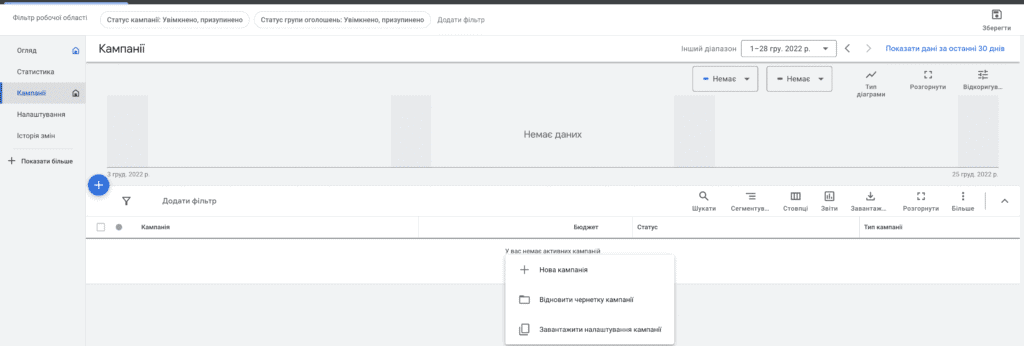
3. We write down keywords (user queries) and basic information about the target audience.
4. We create an advert that potential buyers will see.
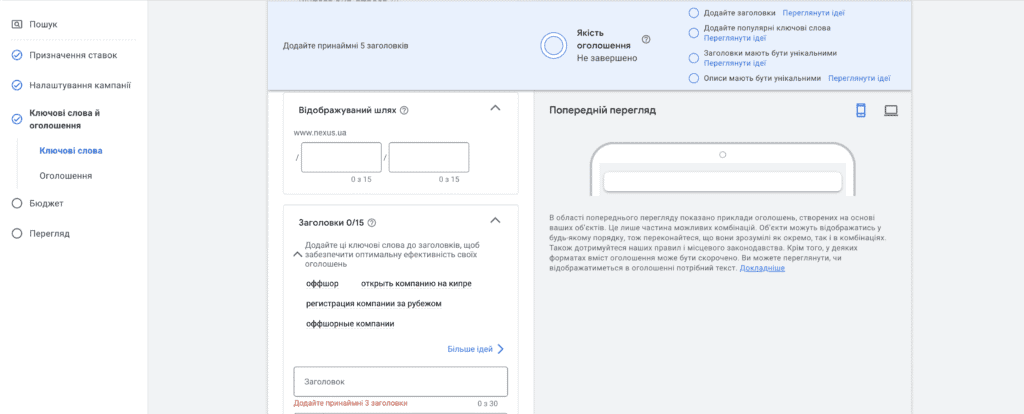
5. Setting the budget, fixing problems and preparing the RC for publication.
The cost is influenced by many factors: the duration of the PPC, the number of competitors, the niche you work in, and the goals (sales, traffic, app advertising, or working on awareness). Only beginners believe that it is enough to set the lowest possible CPC limit to save money.
Usually, experts work on the principle of “tell me how much money you have, and I’ll figure out what can be done for this budget”.
It is important to understand that a high-quality result is obtained only after testing different ad variants. Initially, you will never guess which headline or picture will attract a client. For example, one part of the audience will be delighted if you offer the maximum discount, while the other may consider the low price suspicious and deliberately buy from a seller who offers a bonus to the order rather than a discount.
The specialists of our marketing department are at your service. We will set up, test, and deliver results that meet your budget and goals. We work with a contractual guarantee. To get a free consultation, contact us in any convenient way.